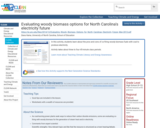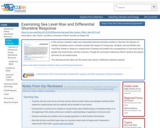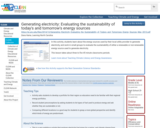
In this activity, students learn about the pros and cons of co-firing woody biomass fuels with coal to produce electricity.
- Subject:
- Applied Science
- Career and Technical Education
- Environmental Science
- Environmental Studies
- Physical Science
- Material Type:
- Activity/Lab
- Provider:
- CLEAN: Climate Literacy and Energy Awareness Network
- Provider Set:
- CLEAN: Climate Literacy and Energy Awareness Network
- Author:
- Dana Haine
- University of North Carolina, School of Education
- Date Added:
- 09/24/2018




